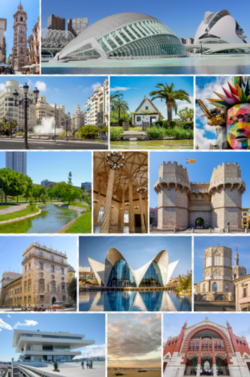Cartaganca
This article is incomplete because it is pending further input from participants, or it is a work-in-progress by one author. Please comment on this article's talk page to share your input, comments and questions. Note: To contribute to this article, you may need to seek help from the author(s) of this page. |
Cartaganca
Cartegantza | |
|---|---|
Municipality | |
 | |
| Country | |
| State | |
| Settled | 5th century CE |
| Government | |
| • Type | City |
| • Mayor | Leandro Durrizaga |
| Population (2018) | |
| • Municipality | 573,413 |
| • Urban | 971,000 |
| • Metro | 1,120,265 |
Cartaganca (Cabecan: Cartegantza) is the capital of the state of Cabeca and the fourth-largest city in Produzland after Burlon, Lavoeira, and Oraveira, with around 500,000 inhabitants in the administrative centre. Its urban area extends beyond the administrative city limits with a population of around 900,000 people. Cartaganca is Produzland's sixth largest metropolitan area, with a population ranging from 1.0 to 1.1 million depending on how the metropolitan area is defined. The Port of Cartaganca is the one of the busiest on the Bay of Ascoy, and in Lira.
Cartaganca was found in the year 432 AD as a port city in the Kingdom of Lurrak not long after Orthurian withdrawl from the area as Cartegantza. Cartaganca was the capital of the Kingdom of Velarre once the capital was moved from Lurrak (San Aurelio). In 1238 the king of Aenicioa, Ramiro V conquered the city and divided the land among the nobles who helped him conquer it, the majority of the Velarre land given to the Dukes of Sundrescia. He also created a new law for the city, the Furs of Cartaganca, which were extended to the rest of the Duchy of San Aurelio. After the partition of the Kingdom of Velarre, Cartaganca was ceeded from the Duchy of Sundrescia to the newly established Principality of Cabeca by Produese King Vincent VI and made its capital. It remained the Cabecan capital after Cabeca was given independence in 1925, Cartaganca however again became the capital of Cabeca when the republic was annexed into the Federal Republic of Produzland, and has remained its state capital since.
The city is situated on the southeast banks of the Bay of Ascoy, on the coast of Cabeca, fronting the Gulf of Cartaganca on the Bay of Ascoy. Its historic centre is one of the largest in Produzland, with approximately 420 acres; this heritage of ancient monuments, views and cultural attractions makes Cartaganca one of the country's most popular tourist destinations.
